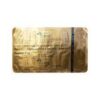
Top 20 Biology Laboratory Equipment
The daily routine of a biologist involves the use of basic equipment in their biology experiments — such as microscopes, test tubes, beakers, and Bunsen burners — as well as high-tech scientific equipment and computers.
This equipment is the bare-bone basics that you’d find in any laboratory. This equipment is necessary for the basic studies of biology: visualizing cells and organelles, as well as preparing samples of cells or fluids for testing or visualization, dissecting specimens, or mixing chemicals.
Our Top 20 Biology Laboratory Equipmentare:
1. Microscopes
Biologists use microscopes of differing powers to see organisms and samples more closely. They are high-powered, extremely expensive, and sensitive pieces of equipment that can make even the smallest parts of a single cell seem clear.
Instead of using beams of light to illuminate the specimen being viewed, as inexpensive light microscopes do, an electron microscope uses beams of electrons. The beams of electrons bring the finest details of the cell into focus and can allow even large molecules to be seen.
The smallest size you can see with your naked eye is 0.2 mm, which is equal to 200 micrometers. This size is equivalent to one ridge on your fingerprint. Light microscopes magnify cells up to 1,000 times. Using the shortest ray of light, which allows the highest resolution, light microscopes can view things as small as 0.2 micrometers in width — that is, 0.0002 mm.
For objects smaller than 0.2 micrometers, an electron microscope must be used. Electron microscopes allow you to see objects that are as small as 0.2 nanometers (nm), which is equal to 0.000000002 mm. In comparison to a light microscope being able to magnify 1,000 times, electron microscopes can magnify objects 200,000 times.
2, 3, 4. Slides, test tubes, and petri dishes
To examine a specimen, biologists must place a sample — whether the sample is blood, mucus, saliva, skin cells, or urine — in or on something:
- Slides: If the sample is going to be viewed under a microscope, some of the cells are gently smeared onto a glass slide, treated with a fixative so that the cellular components don’t move, and covered with a glass cover slip.
- Test tubes: If the sample needs to be centrifuged — spun very rapidly to separate fluid and particles — or needs to have solutions added to it, then the sample most likely is placed in a test tube.
- Petri dishes: If a sample must be grown before it can be identified, the sample must be cultured. To culture a sample, a petri dish containing a culture medium is inoculated, or smeared and pressed, onto the medium.The scientist must keep the petri dish at normal body temperature for the species being studied (humans: 98.6ºF, 37ºC) for approximately 24 to 72 hours and wait for the specimen to grow. A series of tests can then be done on the cultured specimen to determine what organism it is.
5, 6. Dyes and other indicators
Dyes are agents that color structures of the cell, which allow the structures to be more easily viewed when using a microscope. In some cases, stains make usually invisible structures visible. Some common stains include iodine and methylene blue. If iodine is placed on a sample that contains starch, such as a piece of potato, it will turn the sample dark blue.
Indicators are premade solutions or papers that are used to determine chemical characteristics, such as acidity and composition). Litmus paper is a common example. When dipped into a solution, litmus paper will turn red if the solution is acidic and blue if the solution is basic. Strips of pH paper have a range of colors that can be matched up to estimate the approximate pH of a solution. Top 20 Biology Laboratory Equipment
7, 8, 9. Forceps, probes, and scalpels
Sometimes animals are dissected, or cut apart in an orderly fashion, to find out more about structure or to teach the person doing the dissecting. Scientists already know volumes of information on the structure of animals, but dissection not only teaches you structure, it teaches you technique.
The following equipment is used to perform a dissection:
- A scalpel is an extremely sharp bladed instrument that can neatly split open skin and cut through muscle and organs.
- Forceps are used to hold tissue out of the way or to pick up a structure.
- A probe can be used to remove connective tissue or to lift a structure before it is dissected.
10, 11, 12. Beakers, flasks, and Bunsen burners
The equipment that is common in a chemistry laboratory often is seen in a biology laboratory, too. Biologists also mix solutions and chemicals.
- Beakers are used when the solution mixed in it is going to be poured into something else. (They have a lip on them for pouring.)
- Flasks have a narrow neck and are used when the solution may splash out of a beaker or when the container of solution needs to be plugged at some point in the experiment.
- Bunsen burners are heat sources. They are cylinders attached to a gas line. When the gas line is opened, a spark ignites a flame in the Bunsen burner, which is then used to heat solutions. Sometimes solutions need to be boiled to release gases or to dissolve a solid into the solution.
13. Electronic Balances
These weighing machines are used to find the mass of a specimen.
14. Evaporating Dishes
This equipment is used to evaporate liquids out of sample substances
15,16. Inoculating Dishes
The inoculating loop is a small apparatus that is used to spread bacteria on a petri dish or a glass slide.
17. Filter Paper
The filter paper helps in the filtration process of solutions
18. Thermometer
Every lab is equipped with a basic thermometer as many a time, certain chemical or biological reaction can be carried out in any particular temperature range only and so to proceed, the thermometer becomes very necessary to measure the temperature of the required solution before moving forward with further reaction procedure.
19,20. Spatulas and Scoopulas
These laboratory spatulas are very much similar to the kitchen like spatulas found in our home but they are just very smaller in size in comparison. The spatulas are usually resistant to heat and acids, hence making them suitable for large range use in the laboratory experiments.
These are the basic apparatus that one can witness in any school or college biology labs. Other than these, one will also get to see wash bottles, stirring rods, stopwatch, weighing balance or brushes to clean test tubes. As these apparatuses serve the basic, every student must get familiar with all this equipment and their working to have safe and sound practical experiment experiences in High school biology laboratories.
This is our list of Top 20 Biology Laboratory Equipment. What do you think?


